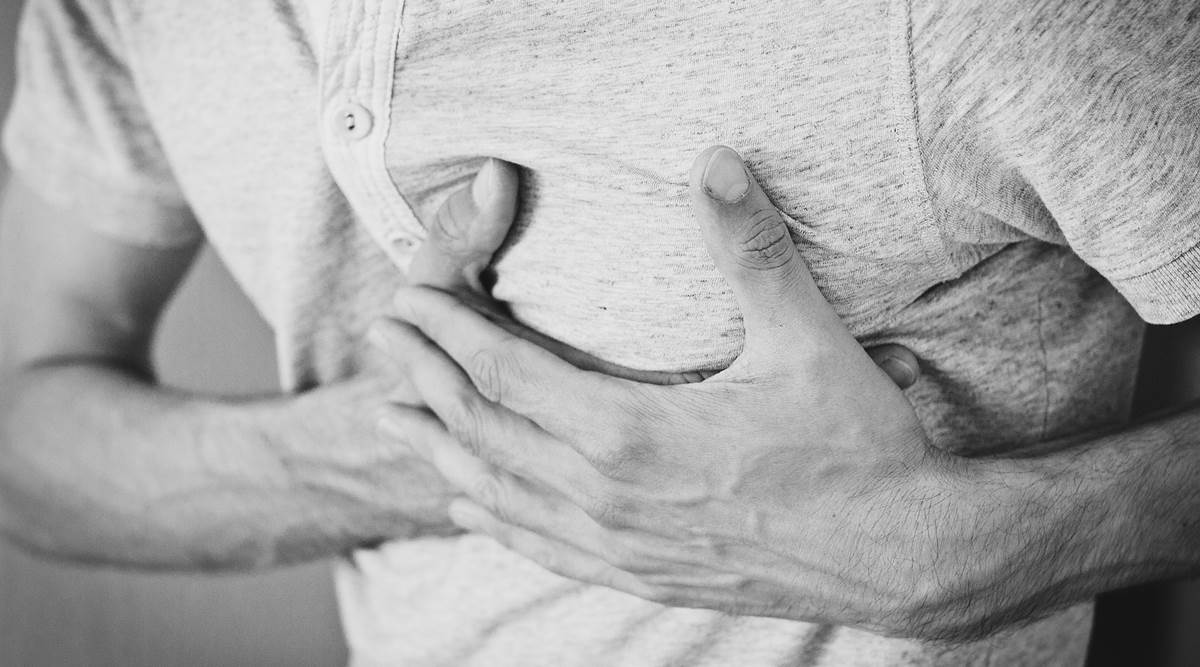Classic symptoms of heart attack include chest pain which is usually constricting or crushing. Often, patients complain of a heavy weight on the chest. It can sometimes be a burning sensation, too, says Dr Ramesh Gudapati, Chief of Cardiology at Star Hospitals, Hyderabad

Though September 29 is observed as World Heart Day every year, the pandemic seems to have changed things drastically this year. One of the most important organs of the human body, the heart is the least understood, even though it continues to pump blood and keep us alive.
Dr Ramesh Gudapati, Chief of Cardiology at Star Hospitals, Hyderabad, says that because of the pandemic, there is a general sense of anxiety and fear of contracting the virus. As such, people have become a little reluctant to come forward and seek medical help until they begin to notice some symptoms. “But, many a time, we don’t tend to witness any warning signs until the situation has already become worse,” he says, adding it is true particularly in the case of heart diseases.
Dr Gudapati says getting a regular health check-up is one of the best ways to stay healthy and fit. The theme for this year’s World Heart Day — ‘Use Heart to Beat Heart Diseases’ — clearly highlights the importance of awareness to overcome challenges.
ALSO READ | Gynecologic Cancer Awareness Month: Early detection, knowledge can save lives
Symptoms of heart diseases may vary from individual-to-individual. Public awareness about the different types of symptoms in heart attack will go a long way in helping them seek medical help early, which is crucial in limiting damage to the heart, says the doctor.
“Heart attack symptoms don’t always announce themselves dramatically. Hence, many people wait for hours before seeking medical help. This can be a fatal mistake. Early treatment not only minimizes heart damage, it can also save one’s life.”
Dr Gudapati goes on to explain that during a heart attack, blood flow to heart muscle is cut off suddenly, because a blood clot blocks an artery. “When the heart muscle does not receive oxygen and nutrients due to the shut-down of blood supply, it can die. The longer the treatment is delayed, the more is the damage. Usually, if the blood circulation is not restored in 6-12 hours, the entire heart muscle can die. Hence, the faster one can get to a hospital, the better are their chances of survival.”
These days, well-equipped hospitals and competent doctors are accessible to most people. But despite this, the delay is often due to the failure on the part of the patient to recognise the symptoms of heart attack.
ALSO READ | Caring for a person undergoing dialysis: Here are some dietary and mental health tips
Classic symptoms include chest pain which is usually constricting or crushing or squeezing type. Often patients complain of a heavy weight on the chest. It can sometimes be a burning sensation. The pain is usually in the front of the chest, while radiating more towards the left side. Often, this can be associated with pain in the left arm. The pain is usually prolonged, lasting more than 30 minutes and frequently for a few hours, the doctor explains.
“The intensity of the pain can vary, but it is often severe and intolerable. Pain may be associated with severe sweating and suffocative feeling. These symptoms may not be there in many patients, especially women.
“Heart attack pain may be experienced anywhere from the lower jaw to the umbilicus. Patients may feel pain only in the jaw, neck, interscapular region (back pain between the shoulder blades), shoulder, arms or stomach only, without any chest pain. In some patients, there may only be pain in the stomach which is often misinterpreted as indigestion or acidity,” says the doctor.
Some people, on the other hand, may never have any pain and may only experience breathlessness or light-headedness, loss of consciousness, severe weakness with feeling of impending doom, acute indigestion, nausea, vomiting, and paralytic symptoms.
ALSO READ | Ankylosing Spondylitis: All you need to know about this auto-immune inflammatory condition
These kinds of atypical symptoms can happen in up to 40-50 per cent of women and 20-30 per cent of men.
“In some people, heart attacks may go unrecognised by the patient and discovered only on subsequent routine ECG. Of these unrecognised heart attacks, about half are truly silent without any symptoms. In the other half, patients usually experience some mild or atypical symptoms which they may have failed to recognise as a heart attack. Silent heart attacks are more common in diabetics. It is important to seek medical help when any person experiences any of the earlier-described symptoms. It is not necessary that all of them turn out to be heart attacks, but in those where it does, it can make a big difference,” advises Dr Gudapati.
What can you do when you suspect a heart attack?
* If someone shows heart attack symptoms, seek medical help immediately.
* Stop performing any physical activity and rest.
* Do not drive yourself and take help from others to reach the hospital.
* If one is already a known heart patient, keep Sorbitrate tablet under the tongue.
* Patients can chew or swallow an aspirin tablet.
? The Indian Express is now on Telegram. Click here to join our channel (@indianexpress) and stay updated with the latest headlines
For all the latest Lifestyle News, download Indian Express App.
Source: Read Full Article
